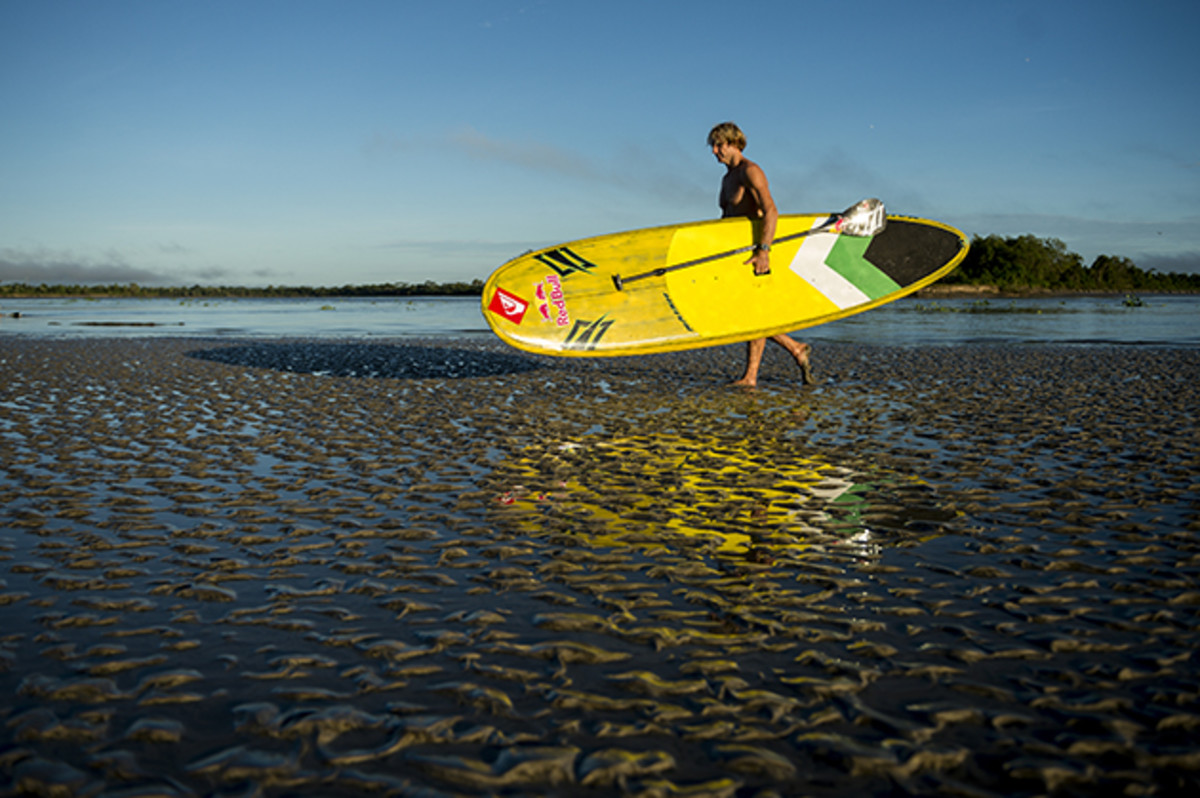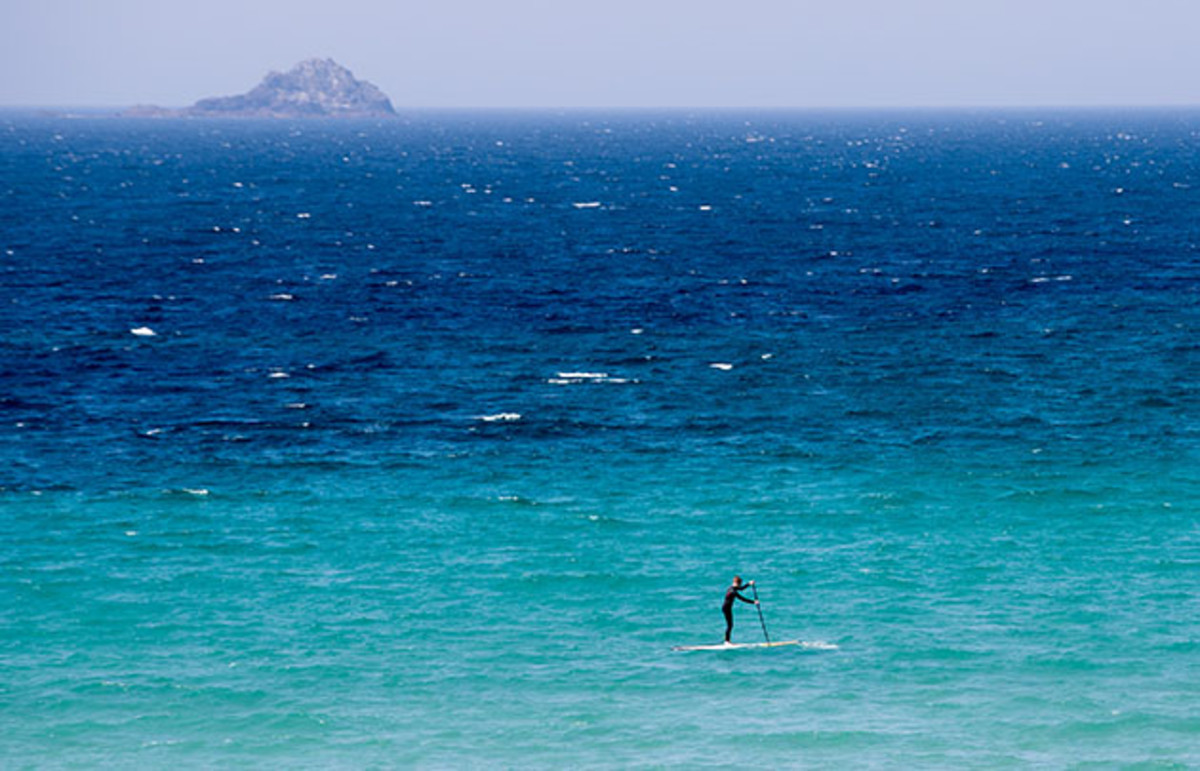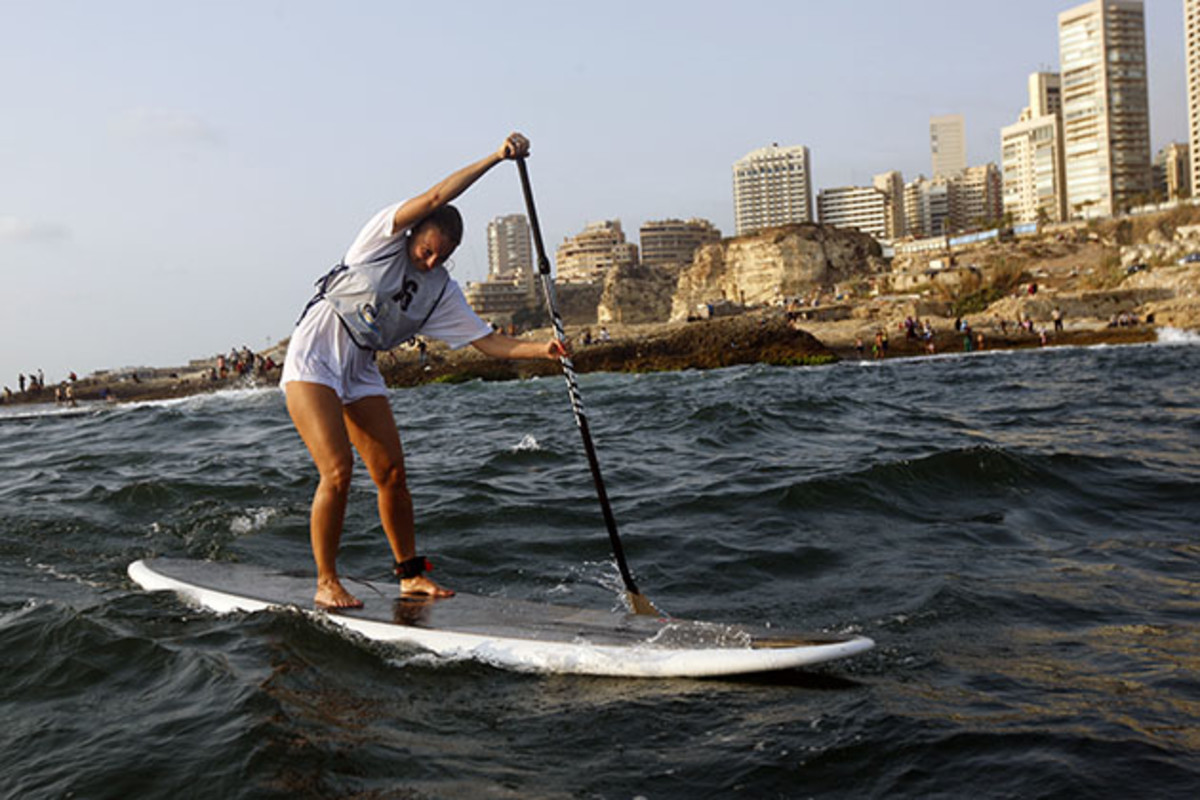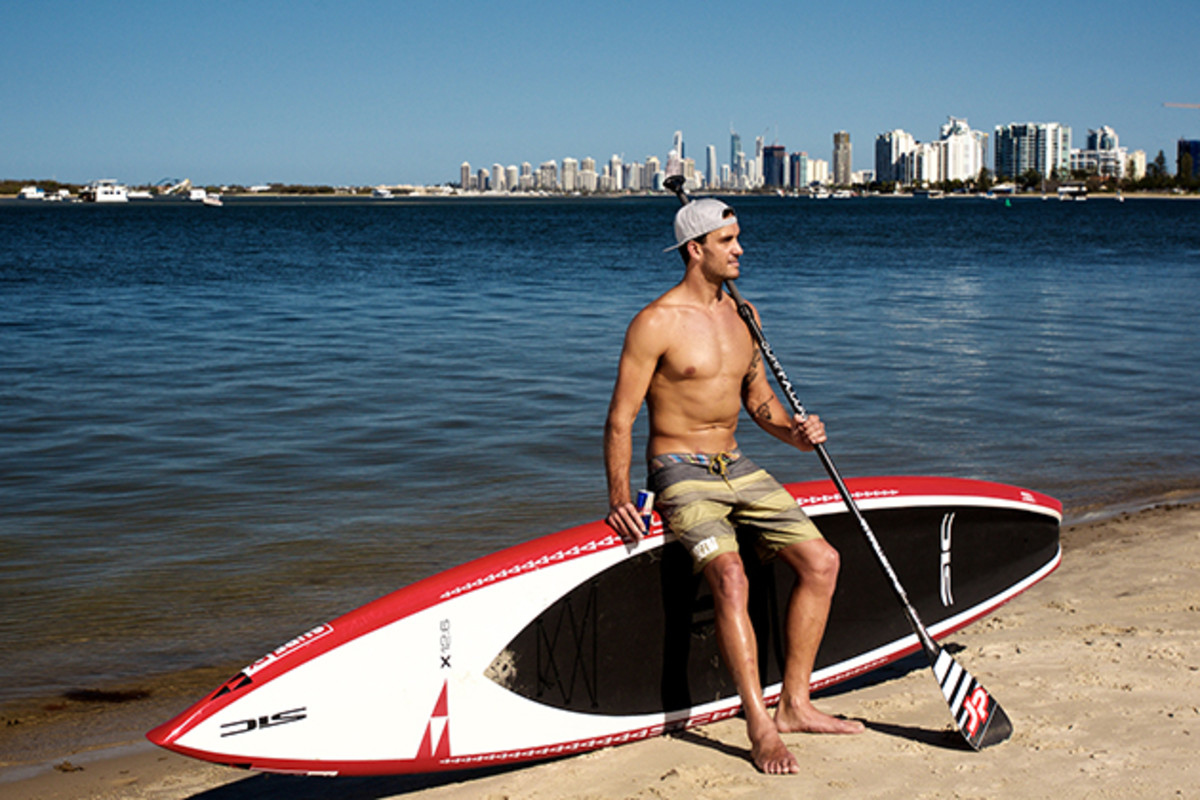Summertime Sweat: Get fit with this stand-up paddleboarding workout

By now you’ve undoubtedly heard of, if not tried, stand-up paddleboarding.
After all, U.S. participation in SUP has nearly tripled in the past few years, with 2.8 million people paddling away each year, according to The Outdoor Federation’s 2015 Special Report on Paddlesports.
And, if we had to guess, we’d say your SUP experience went something like this: You paddled around, about 10 feet out from the shore, for 20 minutes. Maybe you fell off a few times, laughed it off, then went back to lounging on your resort’s beach chair.
• Behind the Body: How marathoner Desi Linden trains for 26.2 miles
While there’s definitely nothing wrong with that—after all, that’s how most SUPers get started—SUP has way more adrenaline to offer, says Christopher Stec, SUP instructor and chief operating officer of the American Canoe Association.

On a stand-up paddleboard, you can explore caves, surf open-ocean waves, perform headstands, or take on whitewater rapids. (Yep, inflatable SUP boards are a thing.) During elite competitions, you’ll regularly see athletes conquering 10-foot-plus swells or clipping along at 10-plus miles per hour with rock-hard bodies.
• Trail running is the workout your summer is missing
“SUP gets more muscles firing than just about any other activity,” says SUP racer Kristin Thomas, executive director of the Stand Up Paddle Industry Association. “It’s deceptively fit-producing, even if you’re just a casual paddler.” You can easily burn 1,000 calories or more an hour while max-effort racing, and even laid-back excursions burn about 500 an hour. While the act of paddling taps your shoulders, back, and core, the muscles in your legs (including your smaller stabilizer muscles that are usually inactive) have to pull major overtime to keep you upright and stable when paddleboarding, especially on turbulent waters.
In fact, because balance and fine motor control is so vital to on-the-water performance, many professional SUPers actually use skateboarding and snowboarding as ways to hone their abilities year-round, Stec says. Meanwhile, racers like Thomas also cycle, run and strength train multiple times a week (in addition to paddling) to develop the power and endurance needed to cover water in crazy-fast times. Case in point: In 2014, top endurance SUPer Shane Perrin paddled 101 miles in 24 hours to set a new world-record.

High-Intensity SUP Workout
Become a better, stronger and fitter SUPer with this core-hammering SUP circuit workout, courtesy of Leslie Ross, SUP instructor in Breckenridge, Colo. On the board, perform each exercise for 30 seconds and then immediately move onto the next one. Complete the entire circuit one time through and, as you progress, add additional rounds to the routine. Don't have a board—or water? Performing these moves even on dry land is sure to make you sweat.

Testing the Waters
Get into a high-plank position, keeping your body in a straight line from head to heels (or knees, if you need to start by balancing on your knees rather than toes). With your hands directly under your shoulders and your core tight, tap one foot into the water, return it to the board, and repeat on the opposite side.
Paddle Twists
Sit tall in the middle of the board with your legs stretched out in front of you. With your arms extending out to the sides of your body, hold the paddle just in front of your shoulders. While extending your head up to the sky, twist your body and paddle to one side as far as you can without tipping the board over. Immediately repeat in the opposite direction.
• Kitesurfing is the new way to ride waves to a fitter body
Plank-Ups
Get into a low-plank position, keeping your body in a straight line from head to heels (or knees). With your elbows directly under your shoulders and your core tight, push through your chest and triceps to raise up onto your hands. Pause, then lower back down to your forearms and repeat. Make sure to keep your body in a straight line while completing the movement; do not “break” at the waist.

Side Plank Paddle-Lifts
Get into a side plank (you can use either your feet or your knees depending on your level). Let your hips drop to the board and, with your top hand, grab the paddle in the middle of its shaft. This is your starting position. From here, simultaneously raise your hips to be in line with the rest of your body and raise the paddle as high off of the board as possible. Pause, return to start and repeat. Halfway through, switch to the opposite side.
V-Sits
Lie on your back and hold the paddle straight above your chest, arms straight. Then, squeeze your abs to simultaneously raise your legs and your shoulders off of the board until your paddle meets your legs. Pause, then lower back down to the starting position and repeat.
